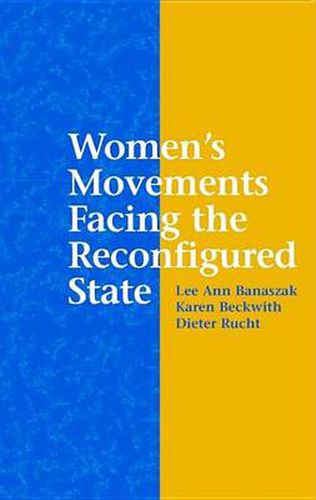Readings Newsletter
Become a Readings Member to make your shopping experience even easier.
Sign in or sign up for free!
You’re not far away from qualifying for FREE standard shipping within Australia
You’ve qualified for FREE standard shipping within Australia
The cart is loading…






This book examines the relationship between women’s movements and states in West Europe and North America, as states have relocated their formal powers and policy-making responsibilities. Since the 1980s, North American and West European states have reduced the scope and volume of their national responsibilities, increasingly employing neoliberal free market rhetoric, and developed transnational economic and political authorities. Simultaneously, second wave women’s movements have been transformed. Movements that were revolutionary in rhetoric, autonomous from states, and largely informally organized in the 1970s are, by the 1990s, employing moderate neoliberal rhetoric, entering state institutions as active participants, and creating more formal organizations. Utilizing a common theoretical framework, the contributors examine how movements have influenced the reconfiguration of nation-states and how these changes have influenced the goals, mobilization, tactics, success and rhetoric of women’s movements in various Western European and North American countries.
$9.00 standard shipping within Australia
FREE standard shipping within Australia for orders over $100.00
Express & International shipping calculated at checkout
This book examines the relationship between women’s movements and states in West Europe and North America, as states have relocated their formal powers and policy-making responsibilities. Since the 1980s, North American and West European states have reduced the scope and volume of their national responsibilities, increasingly employing neoliberal free market rhetoric, and developed transnational economic and political authorities. Simultaneously, second wave women’s movements have been transformed. Movements that were revolutionary in rhetoric, autonomous from states, and largely informally organized in the 1970s are, by the 1990s, employing moderate neoliberal rhetoric, entering state institutions as active participants, and creating more formal organizations. Utilizing a common theoretical framework, the contributors examine how movements have influenced the reconfiguration of nation-states and how these changes have influenced the goals, mobilization, tactics, success and rhetoric of women’s movements in various Western European and North American countries.